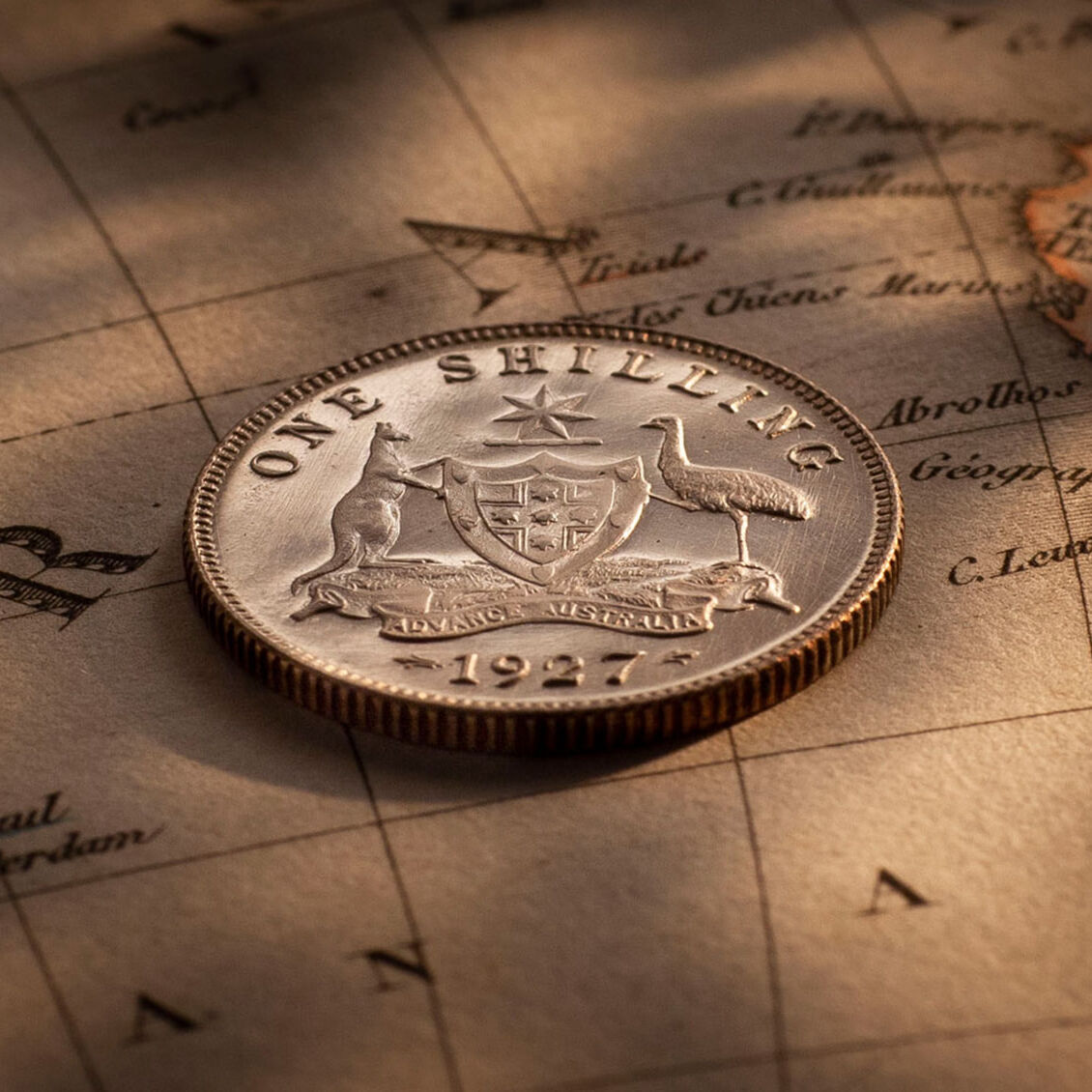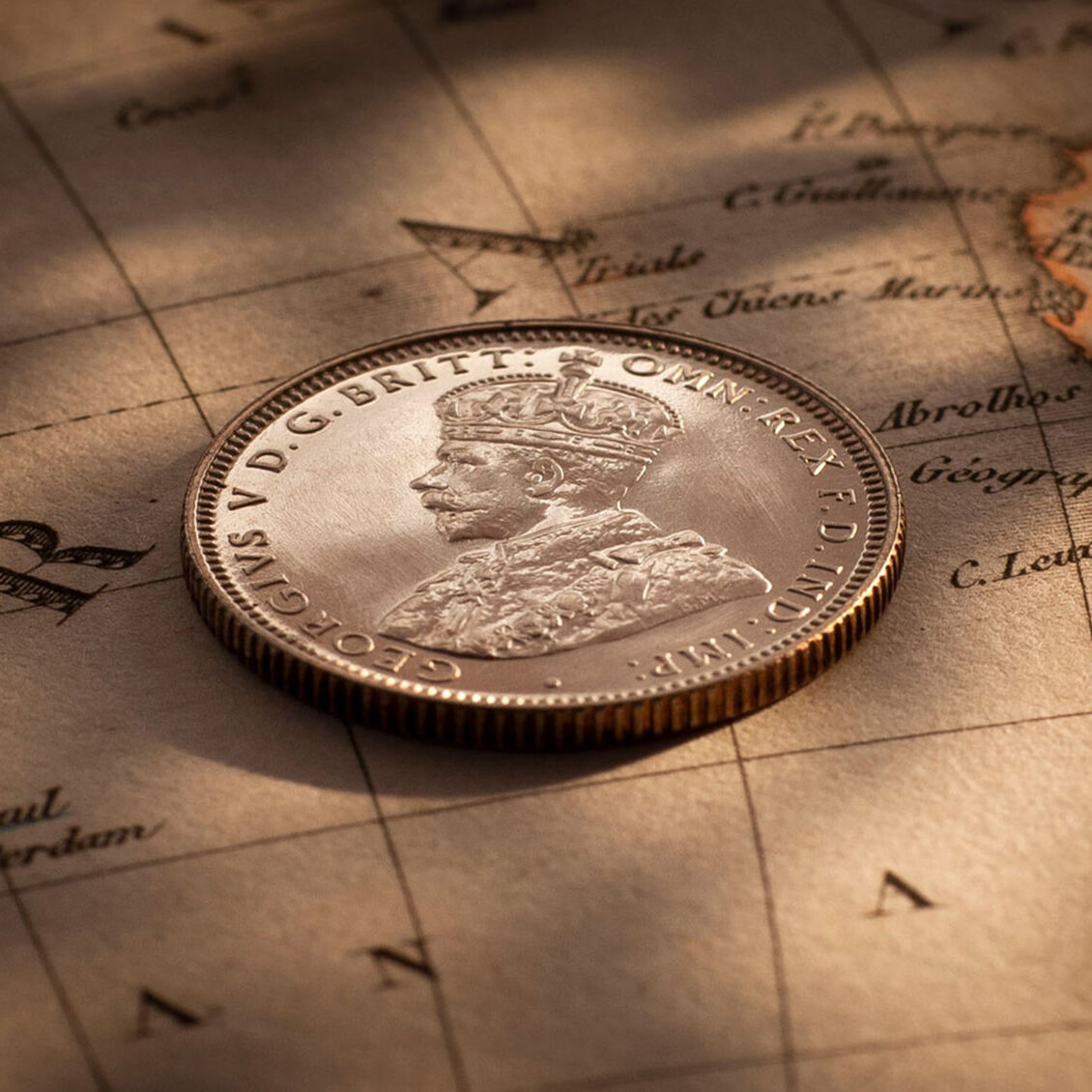Proof 1927 Shilling struck as a Coin of Record at the Melbourne Mint and one of two known


Australian Pre-decimal Coins that were struck as proofs - but not destined for collectors - are technically referred to as Coins of Record.
The term, COIN OF RECORD, is to a large extent self-explanatory. It is a coin that has been minted to put on record a date. Or to record a design.
What is not self-explanatory is that Coins of Record were always struck to proof quality as presentation pieces. And were struck in the most minute numbers satisfying the requirements of the mint rather than the wants of collectors. Forget the notion of striking ten thousand proofs, as collectors are accustomed to today. Let's talk about striking a total of ten coins ... or maybe less!
For today’s collectors the Coins of Record offer a wonderful link to the past and are extremely rare, two reasons that make them so popular.
There was no commercial angle in the production of Coins of Record. The mints were not out to make money from the exercise. Quite the reverse, striking a proof coin in our pre-decimal era was a very labour intensive (and hence costly) exercise that would have dented the mints annual budget quite considerably. The prime reason why so few coins were struck.
So, what happened to these Coins of Record? Where did they go? And if they were struck by the mints for their own use, how did they get into collector's hands?
In the main, Coins of Record ended up in the mint’s own archives, preserving its history for future generations. Any coins that were surplus to requirements may also have been sent to a museum or public institution.
Coins of Record were also put on display at public Exhibitions. The two known examples of the Proof 1866 Sovereign and Proof 1866 Half Sovereign were especially struck to exhibit as ‘products of New South Wales’ as part of the Colonial Mints display at the International Colonial Exhibition of 1866 and the International Exposition in Paris, 1867. They were discovered in London in the early 1970s.
It is noted that many of the overseas mints have over time sold off Coins of Record that they considered excess to their requirements allowing them to come into collector's hands. The Royal Mint South Africa sold off several Australian gold proofs in the 1990s.
Respected author, Greg McDonald, provides us with an insight as to why Coins of Record are so limited in numbers when he shared with us a definition put out by the Royal Mint London of a proof coin.
“Struck on a slow-moving coining press using carefully polished dies which are frequently cleaned during use. The materials from which the coins are made are specially processed and the coin blanks are carefully selected and polished before use. Blanks and minted coins are individually handled to prevent accidental damage.
The essential characteristics of proof coins are highly polished fields, fully reproduced designs free from any flaw, and square edges. Milling where present should be regular and free from any defect.
Because of the very high standard set in manufacture, such coins are slow to make and relatively expensive to produce.”
Coinworks interpretation of a proof coin is as follows.
"When a mint struck a proof coin, its intention was to create a single masterpiece. Coining perfection. Perfection in the design, highly detailed, expertly crafted. Perfection in the fields, achieved by hand selecting unblemished blanks, polished to create a mirror shine. Perfection in the edges to encase the design … exactly what a picture frame does to a canvas."
© Copyright: Coinworks
